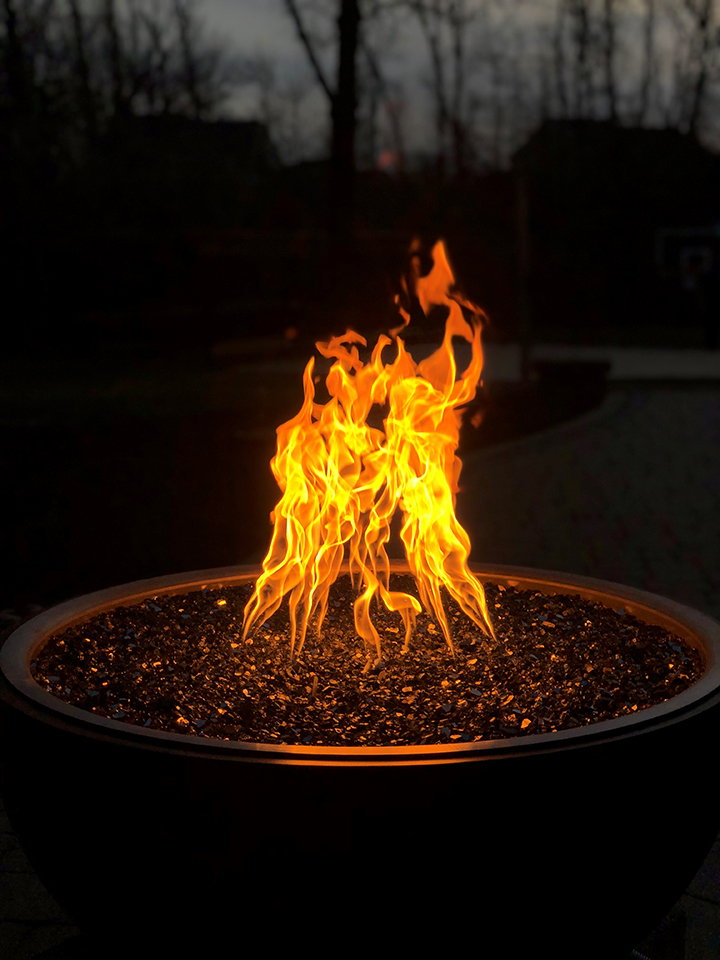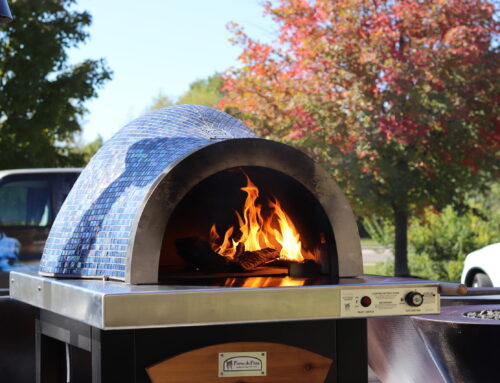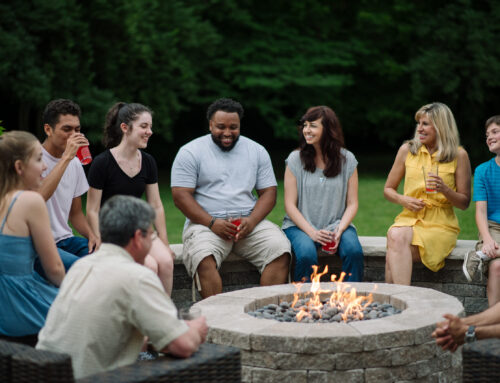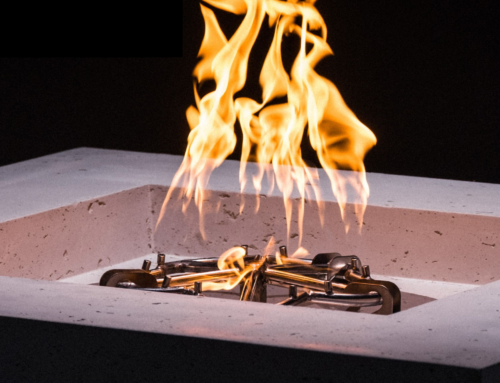
Unlike traditional wood-burning fire pits, HPC Fire Inspired gas designs offer users the ultimate outdoor experience. Our high performing appliances, offer consumers clean-burning low-maintenance selections with the ability to control and customize key features. With a simple flick of a switch or button, consumers can have the ultimate control of their HPC Fire designs. This article will explore the technical aspects of flame height, how it affects the performance of gas fire pits, as well as the key considerations for users seeking to optimize their HPC setup. As always, HPC prioritizes safety passing along beneficial efficiencies for all end users.
Flame Height and Heat Output
One of the primary functions of HPC’s gas fire pits is to provide warmth. The flame height is directly correlated with the heat output of the unit, which is typically measured in BTUs, known as British Thermal Units. Understanding this relationship helps users to maximize both comfort and efficiency in various weather conditions. A taller flame is indicative of a higher gas flow rate, which means more fuel is being burned per unit of time. This leads to greater heat production, making the fire pit more effective at warming a larger area countering cooler weather.
Lower flames produce less heat and are perfect for ambient lighting or decorative purposes, where heat is not the primary desire. For example, a lower flame on a summer evening creates a cozy environment without overheating the space. HPC believes knowledge is power, check out this article to learn more about the benefits of gas fire designs and how to calculate your operating costs. https://hpcfire.com/gas-fueled-fire-features-benefits/
Aesthetic Impact of Flame Height
The visual appeal of an HPC gas fire pit is one of its major selling points, and the flame height plays a significant role in creating the desired ambiance for a particular setting. Whether you want a dramatic, roaring fire or a calm, flickering glow, the flame height can be adjusted accordingly.
Tall flames create a more dynamic and dramatic aesthetic, offering a focal point that draws the eye and creates a lively atmosphere. These larger flames dance and flicker more prominently, enhancing the visual experience of the fire feature. A high flame setting lends itself for social gatherings, parties, or settings where the fire pit serves as the centerpiece of the space.
Lower flames offer a more subtle and intimate ambiance. The smaller flames are less intense, providing a gentle glow that complements quiet and relaxing environments. Lower flame heights are well-suited for settings such as a quiet dinner on the patio or a relaxed evening by the fire with close friends.
Fuel Consumption and Efficiency
A key technical consideration when considering flame height for your HPC fire feature is the effect it has on fuel consumption. The amount of gas, either propane or natural gas, used by the fire pit is proportional to the flame height. This directly affects the operating cost and overall efficiency of the fire pit. Take a look at this link which highlights some of HPC’s offerings as well as accessories that enhance user experiences: https://hpcfire.com/tech-talks-hpc-flames-sustain
As flame height increases, so does gas consumption. For example, a fire pit with a high flame setting will burn through propane or natural gas more quickly than a lower flame. This can lead to higher fuel costs, especially for frequent users. While the higher flame might provide more warmth or a better aesthetic for certain occasions, it may not be the most fuel-efficient option. This setting is best used for shorter durations where aesthetics and heat are prioritized over fuel conservation.
Lower flame settings use significantly less fuel, making them a more economical choice for extended periods of operation. For users who enjoy long evenings by the fire, a smaller flame will stretch the fuel supply and reduce overall operating costs. This setting maximizes fuel efficiency without sacrificing the ambiance of the fire pit. Lower flames are especially advantageous in warmer climates or when the fire pit is used more for visual enjoyment rather than for heat production.
Safety Concerns with Flame Height
At HPC Fire Inspired our commitment to safety is paramount. One of the most important aspects to consider when operating a gas fire pit is safety. The height of the flame directly impacts the level of control you have over the fire, particularly in varying weather conditions.
Flames that are set too high can pose a safety risk, especially in outdoor environments where factors like wind and nearby flammable materials come into play. High flames can be difficult to control in windy conditions, increasing the risk of fire spread or nearby objects becoming too hot.
Keeping flames at a moderate height ensures that the fire remains stable even in breezy conditions. This reduces the risk of the flame being blown out of control or causing accidental burns or potential fire hazards. Fire pits should always be placed at a safe distance from buildings, trees, and other flammable structures. Keeping the flame height moderate helps prevent nearby surfaces from overheating, minimizing the risk of damage or fire. Check out some of HPC Fire’s signature wind guards as well as added safety features to add an extra layer of protection: https://hpcfire.com/tech-talks-enhance-your-design-with-hpcs-wind-guards/
Weather and Environmental Factors
The outdoor environment plays a crucial role in determining the ideal flame height for a gas fire pit. Users must consider wind, temperature, and other environmental conditions when adjusting flame height to ensure both safety as well as comfort.
High winds can cause flames to flicker and blow unpredictably. In such conditions, taller flames become less stable, and the risk of flame dispersion increases. Users should consider lowering the flame height to maintain better control and safety. For users who wish to maintain higher flames even in windy environments, using a fire safe glass wind guard can help protect the flames from the wind while maintaining visibility.
In colder temperatures, the need for warmth may require setting the flame height higher to ensure sufficient heat output. However, this should always be balanced with considerations for safety, weather conditions and fuel consumption.
Flame height is a critical factor that influences the performance, safety, and aesthetic appeal of gas fire pits. By understanding the technical implications of adjusting the flame height, users can optimize their fire pit experience based on their specific needs, whether for heat, ambiance, or efficiency. As always, users must keep safety a top priority while using their fire design. With over 4,000 CSA certified options, HPC Fire Inspired can ensure that our gas burning fire pits deliver safe, enjoyable and fuel efficient experiences no matter the season.
If you have any questions or concerns, please give us a call at 937-436-9800. Let our NFI certified technicians provide guidance around all your fire design needs.
Looking to learn more about HPC’s Offerings? Schedule an online or in person training with Chuck Parsons, HPC’s training and education manager.




